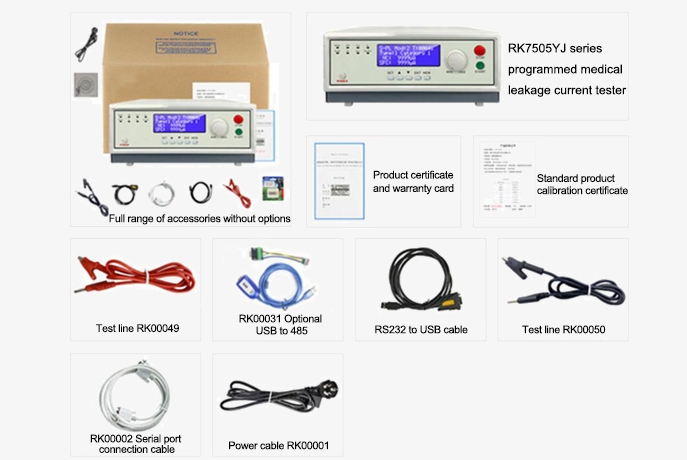Series of AC/DC medical leakage current analyzers with a built-in medical human body simulation network, covering multiple functions such as ground leakage current, contact current, patient leakage current, and patient auxiliary current. Features include programmable and one-click sequential testing.
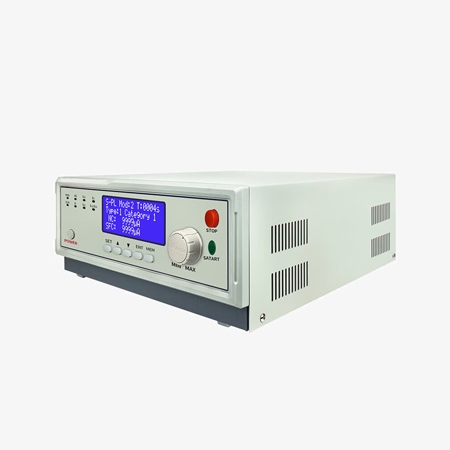
Standards Compliance and Simulation Network
- Meets the requirements of standards such as GB4793, GB9706.1-2020, and JJG1188-2022, ensuring adherence to medical and safety regulations.
- The AC/DC leakage current tester built-in medical human body simulation network for accurate and standardized testing of leakage currents.
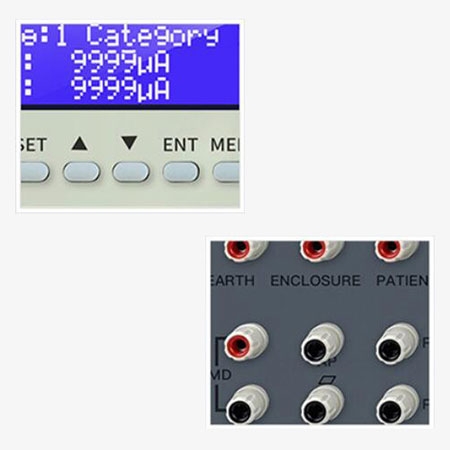
Testing Functionality and Interface Options
- Supports one-click testing for ground leakage, patient leakage (AC and DC), and network power voltage for applied parts, with category-based item configuration and individual item testing options.
- Displays measurement voltage, external voltage, normal and single-fault condition leakage current values simultaneously for comprehensive data output.
- Features a 10mA leakage current range with an LCD2004C display and interfaces for PLC external control and RS232C for real-time data upload.
Applications
SISCO medical leakage current analyzer is designed to meet the requirements for a wide range of instruments and medical devices, making it suitable for testing various types of medical electrical equipment. It supports testing for Class I, Class II, internally powered, and specific types such as Type B, Type BF, and Type CF medical equipment. This versatile analyzer can measure different forms of leakage current, including ground leakage current, enclosure leakage current, patient leakage current (with signal-applied parts), patient leakage current (with applied parts under pressure), and patient auxiliary leakage current (both DC and AC). Additionally, it meets laboratory standards for measuring enclosure leakage current and ground leakage current.

Medical Instrument
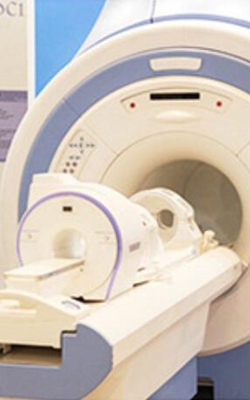
Medical Device
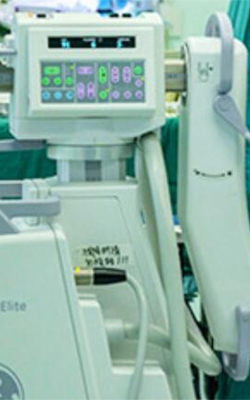
Electrical Equipment
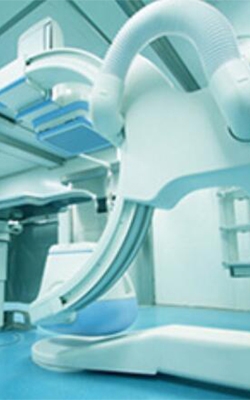
Medical Equipment
| Model | RK7505YJ | RK7510YJ | RK7520YJ | RK7530YJ | RK7550YJ |
| Medical GB9706.1-2020 Standard | Leakage current measurement range AC: I(3~99.9)uA, Resolution: 0.1uA; | ||||
| AC: II(100.0~999.9)uA, Resolution: 0.1uA; | |||||
| AC: III(1000~9999)uA, Resolution: 1uA; | |||||
| Patient current, auxiliary current measurement range DC: I(3~99.99)uA, resolution: 0.1uA; | |||||
| DC: Ⅱ(100.0~999.9)uA, resolution: 0.1uA; | |||||
| / | DC:Ⅲ(1000~9999)uA, resolution:1uA | ||||
| Measurement accuracy: ±5%+3 words, Note: The accuracy range is for current > 10uA | |||||
| Frequency response range: DC~1MHz, Measurement impedance circuit (MD): Complies with GB9706.1-2020 | |||||
| Output Voltage | Measure the voltage output range of the power supply: 0V~300V resolution: 1V, accuracy: ±5%+2 words | ||||
| Output Voltage Capacity | 500VA | 1000VA | 2000VA | 3000VA | 5000VA |
| Current | Range: (3~9999)uA, Resolution: 1uA, Accuracy: ±4%+3 words | ||||
| Upper Limit Setting | Accuracy range: current>10uA or above | ||||
| Timing Device | (3~9999)s Resolution: 1s, Accuracy: ±5% Range | ||||
| Operating Temperature | 0-40℃, ≤75%RH | ||||
| Power Requirements | 220V ± 10%, 50Hz/60Hz ± 3Hz | ||||
| Interface | RS232, PLC as standard | ||||
| Memory Group | 5 sets of memory | ||||
| Screen | LCD2004C | ||||
| Size | 445x160x352mm | 445x160x352mm | 533x210x430mm | 533x210x430mm | 610x243.5x430mm |
| Weight | 23.2kg | 23.66kg | 38.7kg | 49.2kg | 74.5kg |
| Power Consumption | <50W | ||||
Details
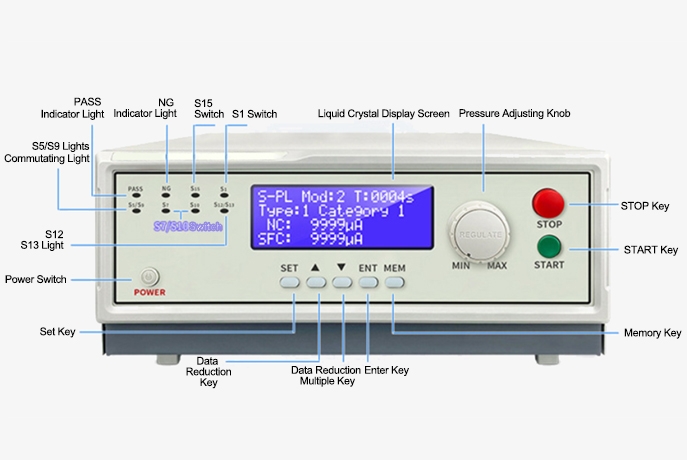

Packing List
- 1 x Leakage current tester
- 1 x User manual
- 1 x Test line
- 1 x Optional USB to 485
- 1 x RS232 to USB cable
- 1 x Power cable
- 1 x Port connection cable
Q1: What is a normal leakage current?
A1: Normal leakage current varies depending on the type of electrical equipment and its application, but generally, it should be minimal and within safe limits. For most household appliances, a leakage current of up to 0.5 mA is considered acceptable, while for medical devices, the limit can be as low as 10 µA. In industrial settings, the acceptable range can differ based on specific standards, but values typically range from 0.5 mA to 3.5 mA. Any leakage current significantly above these thresholds may indicate insulation failure or other electrical faults, posing safety risks and necessitating immediate inspection and remediation. Regular testing and monitoring are essential to ensure that leakage currents remain within safe limits to protect both equipment and users.
Q2: What are the types of leakage current?
A2: There are several types of leakage current that can occur in electrical systems, each arising from different causes and posing varying risks. Capacitive leakage current is caused by capacitive coupling between live conductors and nearby conductive surfaces, often seen in insulated cables and can increase with voltage. Conductive leakage current results from moisture, dust, or other contaminants that create a conductive path on the surface of insulation materials, leading to unintentional current flow. Inductive leakage current occurs due to electromagnetic induction, where nearby magnetic fields influence current flow in unconnected circuits. Ground leakage current refers to the current that flows through the ground conductor, often resulting from insulation breakdown or equipment faults. Understanding these types is crucial for implementing appropriate safety measures and ensuring the reliable operation of electrical equipment.
Q3: How to solve leakage current?
A3: To effectively solve leakage current issues, the first step is to conduct a thorough inspection and testing of the electrical system to identify the source of the leakage. This includes checking for damaged insulation, loose connections, and moisture ingress. Once identified, repair or replace faulty components such as cables, connectors, or insulation materials to eliminate the path for leakage current. Implementing proper grounding techniques can also help divert unwanted current safely away from equipment and users. Additionally, using residual current devices (RCDs) or ground fault circuit interrupters (GFCIs) can provide added protection by quickly disconnecting the circuit when leakage current exceeds safe limits. Regular maintenance and monitoring through periodic testing can help prevent future leakage currents and ensure the safety and reliability of the electrical system.
Tips: How to maintain your digital leakage current analyzer?
- The leakage current test equipment should be used in a well-ventilated, dry environment free from dust and electromagnetic interference.
- If the tester is not used for an extended period, it should be powered on regularly, typically once a month, for at least 30 minutes.
- After prolonged operation, such as around 8 hours, the testing device should be turned off for more than 10 minutes to maintain its proper working condition.
- Over time, the leakage current tester may experience issues such as poor contact or disconnection, so regular maintenance is necessary.
Thank you for buying industrial test and measurement equipment on SISCO.com, all products sold by SISCO and the partner cover a 12 months warranty, effective from the date of receiving the products.
What is covered?
SISCO is responsible for providing free spare parts, and free technical support to assist the customer to repair the defective products until the problem is solved.
What is not covered?
- Product purchased from anyone other than a SISCO store or a SISCO authorized reseller.
- Expendable parts.
- Routine cleaning or normal cosmetic and mechanical wear.
- Damage from misuse, abuse or neglect.
- Damage from use of parts other than SISCO approved.
- Damage from use outside the product’s usage or storage parameters.
- Damage from use of parts not sold by SISCO.
- Damage from modification or incorporation into other products.
- Damage from repair or replacement of warranted parts by a service provider other than a SISCO authorized service provider.
- Damage caused by the application environment not meeting the product usage requirements and the failure to perform preventive maintenance.

